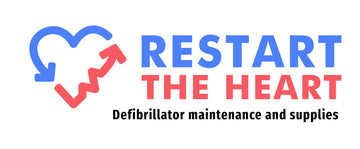A Step-by-Step Guide to Conducting AED Training Sessions
Conducting an AED (Automated External Defibrillator) training session is essential for ensuring that as many people as possible are prepared to act swiftly and effectively in the event of sudden cardiac arrest. Training sessions provide participants with the knowledge and skills needed to operate an AED confidently, potentially saving lives during critical moments. By offering comprehensive training, communities and organisations can increase their overall emergency preparedness.
AED training is not just about understanding the device; it’s about fostering the ability to respond in high-pressure situations. When more individuals are trained to use AEDs, the likelihood of immediate intervention in an emergency increases, reducing the time it takes to administer life-saving procedures. This readiness is crucial as every minute without defibrillation reduces the chances of survival significantly.
Preparing for the AED Training Session
Effective preparation is crucial for a successful AED training session. First, gather all necessary materials and equipment. This includes the AED unit(s), training pads, mannequins, and any instructional materials like manuals or visual aids. Ensure the AEDs have fresh batteries and proper maintenance checks. You want all equipment in optimal working condition to avoid disruptions during the training.
Next, choose a suitable location for the training. It should be a quiet, spacious area that allows for group interaction and hands-on practice. Arrange the seating and equipment beforehand so that participants have a clear view of any demonstrations and easy access to training materials. Ensuring a comfortable and well-organised environment can enhance learning and retention of information.
Finally, make sure to communicate with participants before the training session. Provide them with an overview of what to expect and any preparatory material they might need to review. This sets the stage for an efficient and focused training session as participants arrive ready to engage and learn.
Essential Components of Effective AED Training
A successful AED training session comprises several key components. First and foremost, the training should cover the basic principles of how an AED works. It should also explain the science behind cardiac arrest and how defibrillation can restore a normal heart rhythm. Use simple language and visual aids to ensure everyone understands the fundamentals.
Hands-on practice is another essential component. It's important to allow participants to physically interact with the AED unit, applying pads to mannequins and simulating the process of delivering a shock. This practical experience can build confidence and familiarity with the device, making it more likely that participants will perform effectively in a real emergency.
The session should also include step-by-step demonstrations of how to use the AED. This involves assessing the situation, calling for emergency help, and following the device's prompts. Make sure to address common challenges and troubleshooting tips. Effective training gowns participants with the necessary skills and prepares them mentally to act quickly and calmly under pressure.
Engaging Participants in Hands-On Practice
Hands-on practice is a crucial aspect of AED training. Participants need to feel comfortable and confident when using the device, and the best way to achieve this is through practical experience. Start by distributing AED practice units and mannequins to small groups. This ensures each participant has the chance to physically interact with the equipment.
Next, guide them through the process step by step. Begin with turning on the AED and following its verbal prompts. Have each participant practise placing the AED pads correctly on a mannequin. Emphasise the importance of ensuring proper placement and making sure the area is clear before delivering a shock. This repetitive practice helps to engrain the correct procedures in their minds.
Incorporate realistic scenarios during the practice sessions. This could include simulations where participants must call out verbal commands, such as instructing someone to call 000 or clearing the area before defibrillating.
These scenarios help participants become accustomed to the stress and urgency of a real cardiac event. By practising these steps repeatedly, participants can achieve a level of comfort and readiness essential for real-life emergencies.
Evaluating and Providing Feedback in AED Training
Evaluation and feedback are essential for reinforcing learning and ensuring that participants have absorbed the training material. Begin by observing participants during their hands-on practice. Take notes on their technique, adherence to protocol, and overall confidence. Provide immediate, constructive feedback to correct any mistakes and reinforce proper methods.
Create a checklist that outlines key actions and behaviours. This should include checking responsiveness, correct pad placement, following AED prompts, and calling for help. Use this checklist to evaluate each participant methodically. After the practical session, conduct a brief review session to discuss common errors and best practices. This helps to address any gaps in knowledge and consolidates learning.
Encourage participants to ask questions and discuss their experiences during the session. Group discussions can highlight different perspectives and solutions to potential problems. Finish by giving individual feedback, focusing on strengths and areas for improvement. This detailed evaluation ensures that all participants leave the training feeling confident and prepared.
Conclusion
Conducting comprehensive AED training sessions is not just about operating a device; it's about preparing individuals to act decisively and effectively in emergency situations. By thoroughly preparing for the session, covering essential components, engaging participants in hands-on practice, and providing detailed feedback, you ensure that your training is impactful and effective.
Equip your community or organisation with the knowledge and confidence needed to handle cardiac emergencies. We at Restart the Heart can help you get the right AED equipment and training resources. Browse our AED supply store and purchase one today.

